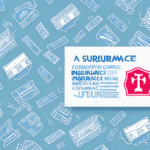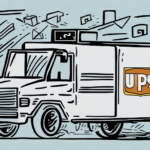How to Send Insured First-Class Mail: A Comprehensive Guide
Sending mail through the United States Postal Service (USPS) has long been a reliable method for communication and delivery. While most are familiar with sending first-class mail, insuring your package adds an extra layer of security that ensures your items reach their destination safely. Whether you're sending valuable documents, important items, or sentimental pieces, insured first-class mail provides peace of mind against loss, theft, or damage. This guide offers an in-depth look into how to send insured first-class mail effectively.
Understanding First-Class Mail and Its Benefits
First-class mail is a USPS service designed for sending letters, postcards, large envelopes, and small packages with priority handling to ensure swift delivery, typically within 1-3 business days. Compared to standard mail, first-class mail offers several advantages:
- Faster Delivery: Priority handling ensures quicker delivery times.
- Reliable Delivery: More consistent delivery schedules compared to other mail classes.
- Delivery Confirmation: Tracking options allow senders and recipients to monitor mail progress.
- Free Forwarding and Return: USPS offers forwarding services and returns for undeliverable mail at no extra cost.
Additionally, first-class mail is eligible for USPS's Informed Delivery service, which allows recipients to preview incoming mail and track packages via email notifications, an online dashboard, or a mobile app. This feature is particularly beneficial for individuals with busy schedules or those frequently away from home.
The Importance of Insuring Your Mail
Insuring your first-class mail extends protection against unforeseen circumstances such as loss, theft, or damage during transit. Whether you're sending valuable items like electronics, jewelry, or important documents, insurance ensures that you are reimbursed for the declared value if anything goes wrong.
According to the USPS Annual Report, mail services handle billions of items each year, and having insurance can significantly mitigate financial risks associated with shipping valuables.
Types of Items Eligible for Insurance
USPS offers insurance coverage for a wide range of items sent via first-class mail, including:
- Personal documents
- Jewelry and valuable items
- Electronics
- Gift cards
- Collectibles
However, certain items are restricted and cannot be insured, such as flammable liquids, hazardous materials, and perishable goods. It's crucial to review the USPS Insurance Guidelines to ensure your items are eligible for coverage.
Factors Affecting the Cost of Insurance
The cost of insuring your first-class mail depends on several factors:
- Declared Value: Higher declared values increase the insurance cost.
- Package Weight: Heavier packages may incur higher insurance fees.
- Destination: International shipments might have different insurance rates compared to domestic ones.
- Additional Services: Services like signature confirmation can add to the overall cost.
For example, insuring a package valued at up to $50 typically starts at around $1.65, with costs increasing based on the declared value. It's advisable to declare the accurate value of your package to ensure adequate coverage.
Step-by-Step Guide to Sending Insured First-Class Mail
Follow these steps to send your package securely with insurance:
- Package Your Item: Use sturdy packaging materials to protect the contents. Wrap fragile items with bubble wrap or padding.
- Label the Package: Clearly write the delivery and return addresses. Include the declared insurance value on the label.
- Visit the USPS: Go to your local post office or schedule a pick-up through the USPS Online Scheduler.
- Provide Package Details: Inform the USPS clerk of the package weight, destination, and the declared value for insurance.
- Choose Additional Services: Opt for services like signature confirmation if desired.
- Complete the Transaction: Pay the necessary fees for postage and insurance. Receive a receipt with a tracking number.
Calculating the Insurance Value
The insurance value is the total amount you're declaring for reimbursement in case of loss or damage. To calculate this:
- Add the cost of the item(s) being shipped.
- Include the cost of shipping and handling.
The USPS allows insurance coverage up to $5,000 for domestic shipments and $2,500 for international ones. Ensure that the declared value accurately reflects the total worth of the package contents.
Tracking Your Insured Mail
Every insured first-class mail item comes with a tracking number, allowing you to monitor its journey:
- USPS Website: Visit the USPS Tracking page and enter your tracking number.
- Mobile App: Use the USPS Mobile App to receive real-time updates on your package status.
Tracking provides transparency and helps you stay informed about your package's location and estimated delivery date.
Handling Lost or Damaged Mail
If your insured mail is lost or arrives damaged, follow these steps to file a claim:
- Gather Documentation: Retain the original receipt, proof of insurance, and any photos of the damaged package.
- File a Claim: Visit the USPS Claims Center to submit your claim online or at a local post office.
- Provide Necessary Details: Include the tracking number, description of the contents, and the declared value.
- Await Resolution: USPS will investigate the claim and, if approved, reimburse the declared value.
Ensuring all documentation is accurate and submitted promptly can expedite the claims process.
Common Mistakes to Avoid
Avoid these pitfalls to ensure your insured first-class mail is processed smoothly:
- Poor Packaging: Inadequate packaging can lead to damage and complicate insurance claims. Use durable materials and proper cushioning.
- Incorrect Insurance Declaration: Under-declaring the value may result in insufficient coverage, while over-declaring can increase costs unnecessarily.
- Missing or Illegible Labels: Ensure all addresses are correct and clearly written to prevent delivery issues.
- Ignoring Restricted Items: Sending prohibited items can lead to package rejection or legal consequences.
Alternatives to Insured First-Class Mail
If first-class mail insurance doesn't meet your needs, consider these alternatives:
- Priority Mail: Offers faster delivery (1-3 business days) with built-in insurance up to $100.
- Express Mail: Guarantees overnight delivery with insurance coverage and tracking.
- Registered Mail: Provides maximum security and insurance for valuable or important items, with detailed tracking and secure handling.
Each service has its own benefits and pricing structures, so choose the one that best aligns with your shipping requirements.
Comparison of USPS Shipping Options
The table below highlights the key differences between various USPS shipping services:
| Mail Class | Delivery Time | Insurance Included | Max. Weight | Starting Price |
|---|---|---|---|---|
| First-Class Mail | 1-3 Days | Up to $5,000 | 15.99 oz | $0.55 |
| Priority Mail | 1-3 Days | Up to $100 | 70 lbs | $7.70 |
| Express Mail | Overnight | Up to $100 | 70 lbs | $26.35 |
| Registered Mail | Varies | Up to $50,000 | 70 lbs | $15.00 |
Tips to Save on First-Class Mail Insurance
Managing costs while ensuring adequate coverage is essential. Here are strategies to save on insurance fees:
- Optimize Packaging: Reduce the size and weight of your package to lower insurance costs.
- Consolidate Shipments: Combine multiple items into one package to benefit from bulk shipping rates.
- Utilize Discounts: Businesses or frequent shippers may qualify for volume discounts with USPS.
- Compare Services: Assess whether alternative services like Priority Mail offer better value based on your shipping needs.
By implementing these tips, you can maintain comprehensive insurance coverage without overspending.
Conclusion
Insuring your first-class mail is a vital step in safeguarding your valuable and important items during transit. By understanding the benefits, knowing what items are eligible, and following best practices for packaging and labeling, you can ensure a secure and reliable mailing experience. Additionally, being aware of common mistakes and exploring alternative USPS services can further enhance your shipping strategy. Always stay informed by consulting the official USPS website for the latest updates and guidelines.






















